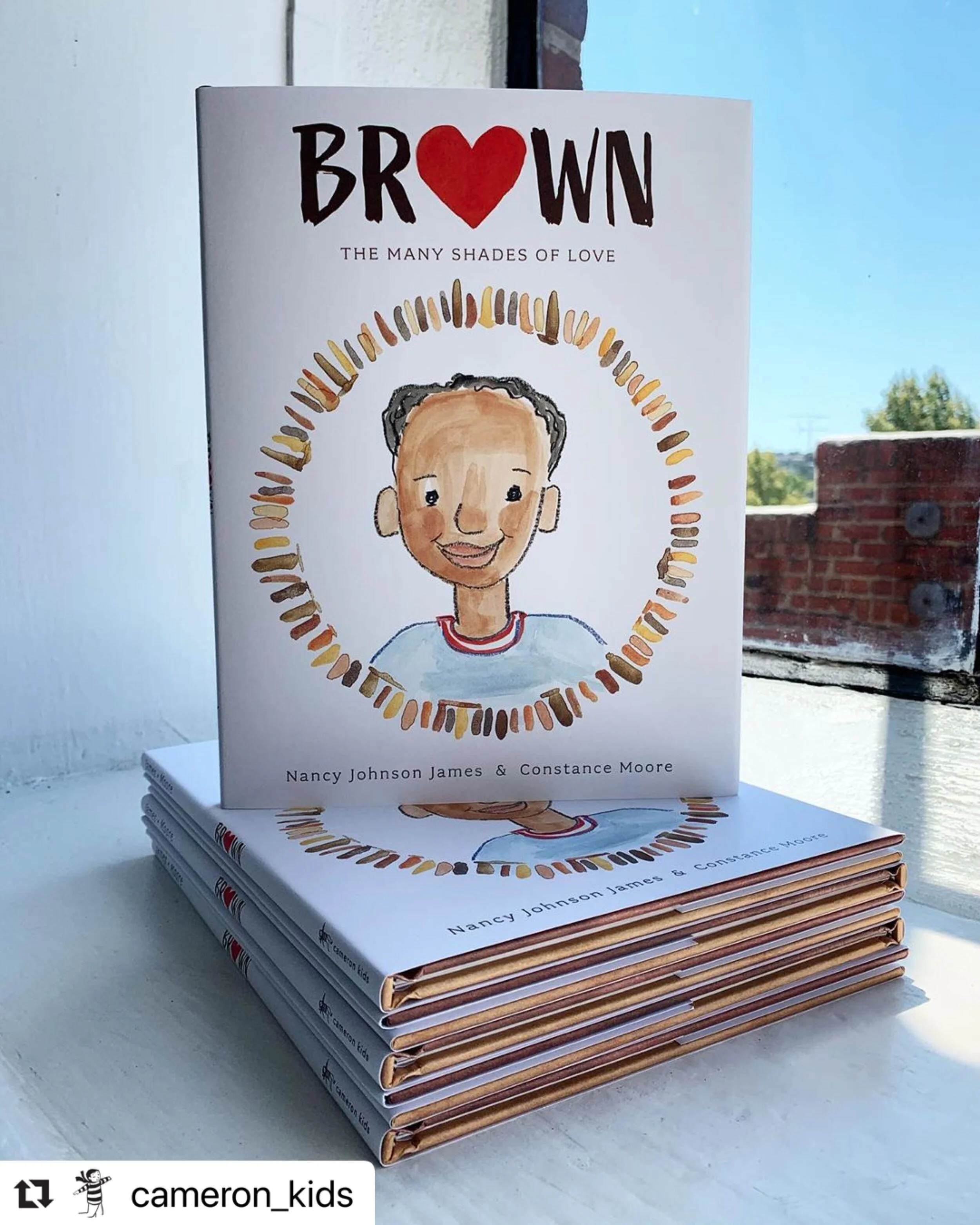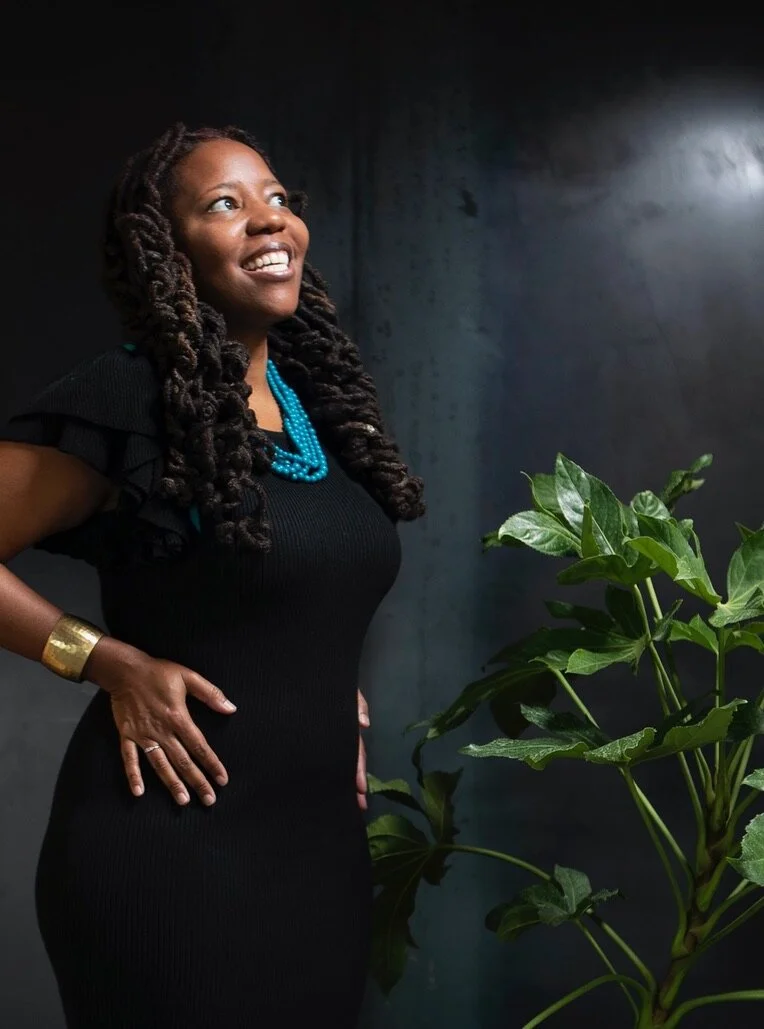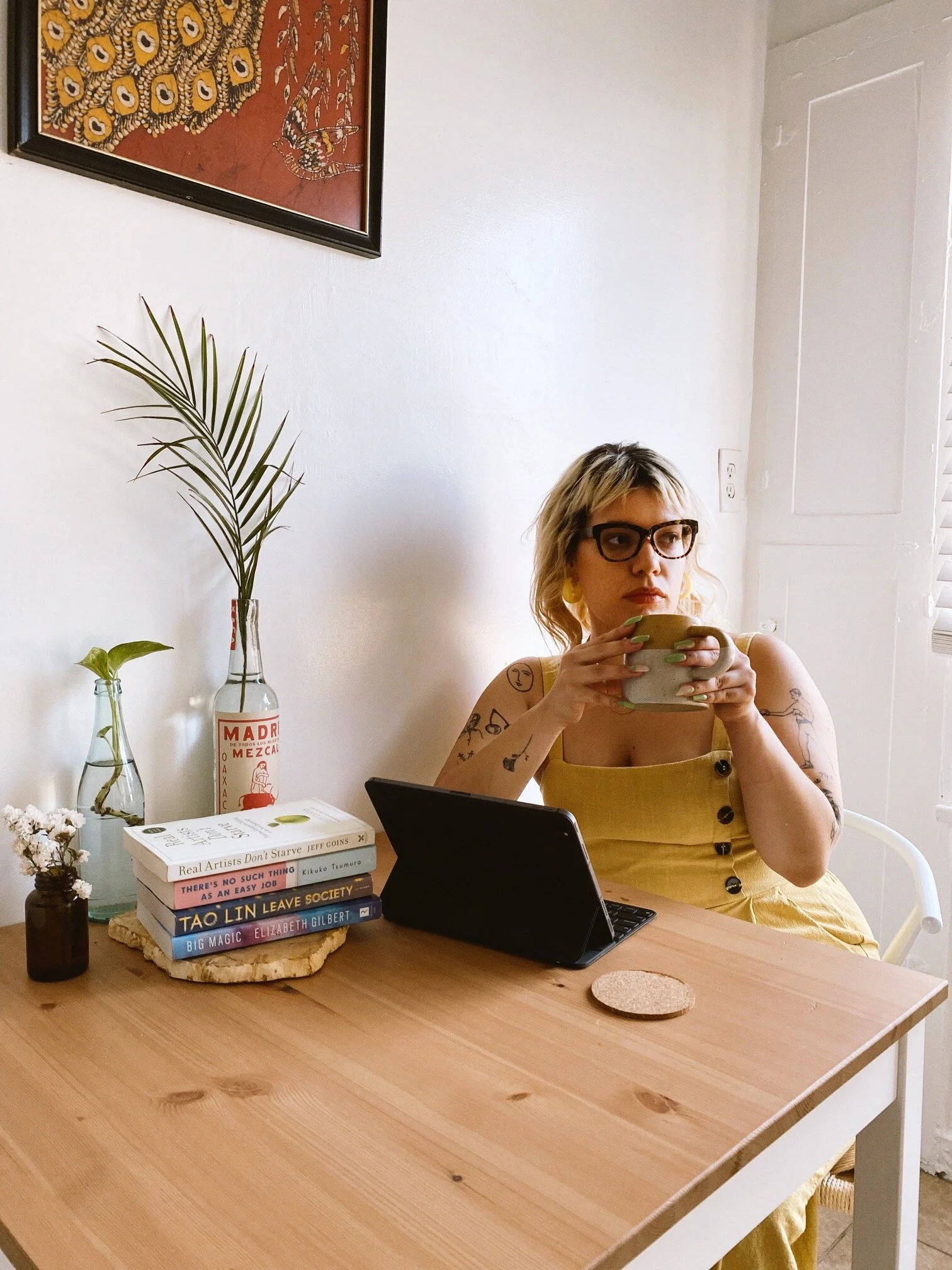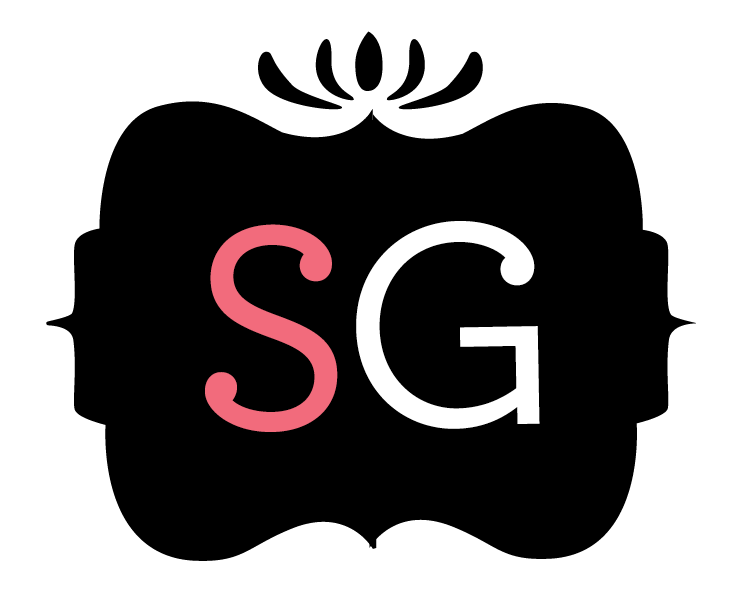An Unfiltered Expression: Interview with Nancy Johnson James and Constance Moore
originally published 9/21/20
Collaborators Nancy Johnson James and Constance Moore release their beautiful children’s book this week. Called “A timely book to combat stereotypes and encourage the celebration of skin colors of Black and brown people,” in a Kirkus starred review, Brown celebrates the many beautiful hues of one boy’s family, including his own—gingerbread.
illustrator Constance Moore
Writer Nancy is an educator and poet based in Oakland, California. Her poetry has appeared in several print and online publications. Illustrator Constance is an artist and educator, also based in Oakland. She loves teaching elementary school art and shares her students' love of color.
Who are your heroes?
Constance: My illustration inspiration is John Steptoe. I first encountered his work in the quiet heartfelt story, Stevie. I remember my mother reading Stevie to me when I was very young. It immediately gave me a sense of familiarity. I connected with Robert’s description of the characters, his loving but frustrated relationship to Stevie and their experiences playing and navigating a complicated connection. Stevie is an intimate portrait of family life. I spent hours marveling over Steptoe’s illustrations, trying to figure out what materials he used to make the simple but evocative images. How did these drawings without much detail create an entire mood? Did the colors radiate from under or over the heavy black outlines? I wondered about these pictures for years. Then Stevie drifted out of my mind. Until the day as a teacher I came across The Story of Jumping Mouse. The book’s illustrations are dazzling. The intricate details of the graphite drawings create a wonderful world for the jumping mouse to travel through. The illustrations in The Story of Jumping Mouse are vastly different from the illustrations in Stevie, in terms of materials and style. Yet both books gave me a sense of deep connection to the characters and the locations. John Steptoe was able to create intimacy within the pages of the books he illustrated. Illustrations are as much a part of books as the words. They set up the tone and feeling of the stories and help us along the way. John Steptoe published Stevie when he was just 19 years old. Steptoe died at the young age of 38. He accomplished so much in his brief life. To me he will always be a source of inspiration. He introduced me to the power of illustration, to the gift of being authentic, and to growing and changing as an artist over time.
writer Nancy Johnson James
Nancy: I don't have a specific hero/shero. As a writer, and just a person, I have been an observer. I've always moved in and out of the action around me. Stepping back gives me a moment to see more of what is going on. Hero is such a weird concept. It usually has something to do with a person's expression of power or relationship to power. I think real heroes are those who are in relationship with love over power.
Sometimes a s/hero is that person who gets up to dance at a concert when no one else is dancing (but should be). It can be that person who does something selfless in the moment or on a regular basis. Or a person you find yourself emulating in word or deed. My own parents are heroes to me because of the trajectory of their lives. It's incomprehensible to consider what they experienced in Kentucky and Oklahoma during Jim Crow. My dad was orphaned and then on his own at 15. He and my uncles and aunts were educated and many were small business owners. My mom began working as a live in domestic as a teen and still pursued her education. She introduced me to writing by teaching me to keep a journal when I was 7 or 8. I did not speak much as a child but I read all the time. She recognized that I needed a place to express myself.
People who are deeply committed to justice and so in love with humanity that they put themselves on the frontline of conflict are heroic. People who speak truth to power and people who identify their role in the movement for justice and fulfill it. There will never be books written or movies made about the people who go into their own pockets and kitchens and prepare food for protestors and those who are unhoused. We don't necessarily laud the folks who take the time to check on an elderly neighbor and run errands for them.
What do you love about being creative?
Constance: I love being an elementary school art teacher and an artist. There is so much energy in the room when students are making art. What I love about being with my students is they are an unfiltered expression of my own art making process. When it’s hard they cry, when they like what they’ve done they celebrate. This energy is so important for my own creative process. It fuels me. What I love about making art is trying to express that raw energy of the students. I have the privilege of watching 5 and 6 year olds draw. This is like being in a master class on mark making. They just get right to it. I’m often trying to express that same confidence in my art. It’s a different kind of confidence than an adult artist has. Children have a pure confidence laced with kindness and joy when they make something they feel good about. For a long time I tried to make a hard line between my identity as an art teacher and my identity as an artist. Probably fueled by three things: the saying “Those who can do, those who can’t teach.”, the lack of respect for elementary school teachers as professionals, and the division between “serious/high art” and “craft” art. I’m an elementary school Art Teacher and an Artist. Both are me. 100%.
Nancy: What I love about being a writer and creative person is the insight it gives me into art and art-making. Being a writer makes me appreciate what I read more deeply because I understand the process. I have a background in the performing arts and I like to paint and draw for my own pleasure. I will never be known for those things, but engaging in those creative processes gives me a deeper understanding and appreciation of the arts overall.
Being a writer is connected to being a reader for me. I get so much joy from reading or hearing the work of others. I attended a Nomadic Press virtual reading a couple of weeks ago and there was a poem read that was so rich and beautiful. Hearing it was like eating good food.
###
I coax sexy writers and artists like Nancy Johnson James and Constance Moore to reveal their creative secrets and processes in interviews to inspire you:
Buy Brown for yourself and every family you love!
Follow Nancy and Constance on Instagram and Facebook.
Explore Constance’s art on her website and follow her on Instagram.
Explore Nancy’s website and follow her on Twitter.
Everybody loves Brown! Read reviews on the American Library Association’s Book List, Kirkus Reviews, and Goodreads.
Feeling inspired? Book a private session with me, The Sexy Grammarian. You always leave private sessions with homework and inspiration, and the first session is always free.












